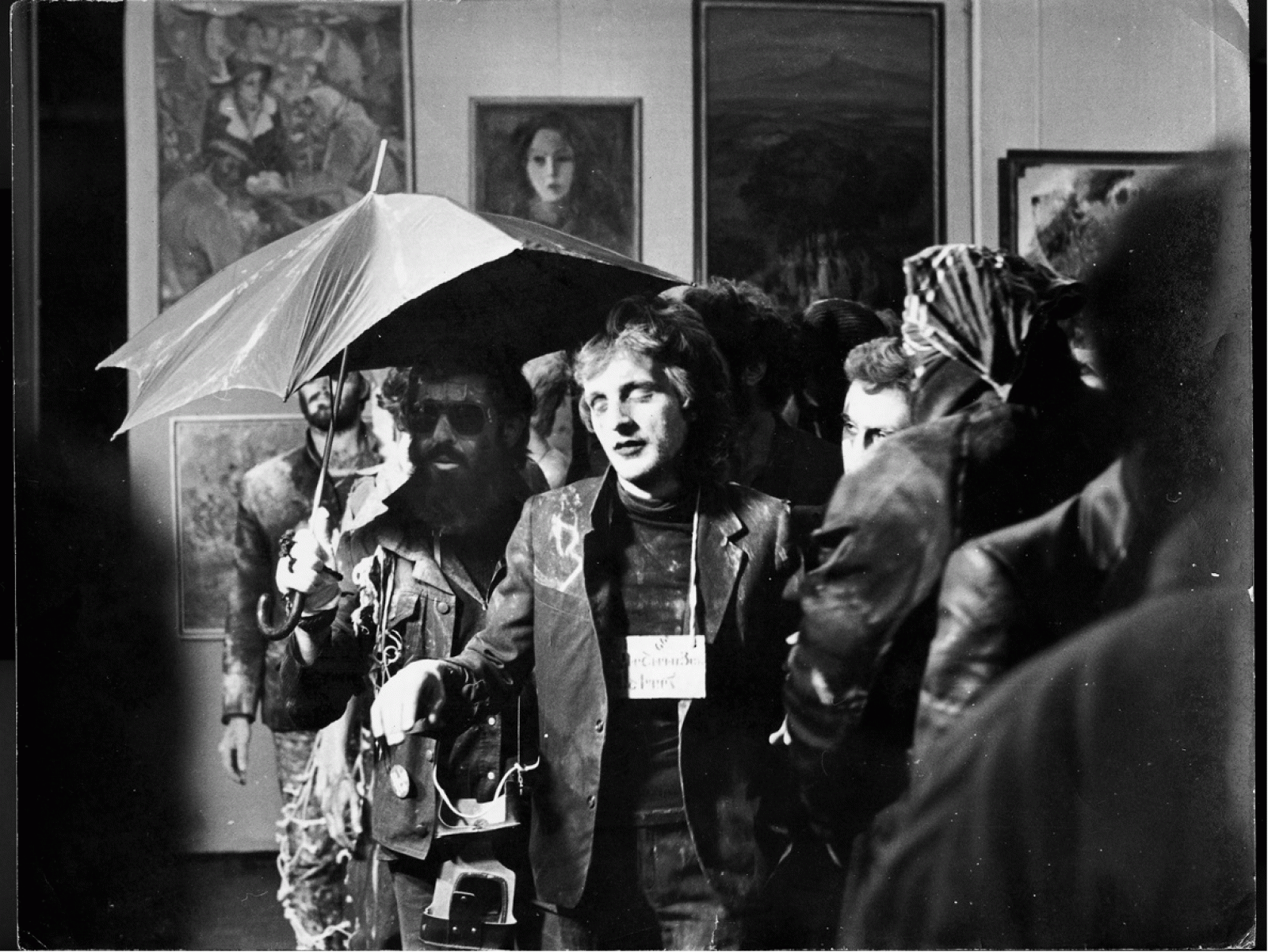KHI 2021+ Lecture Series
Angela Harutyunyan:
“Contemporary Art” and the Post-Soviet Condition

The 3rd Floor. The Official Art Has Died. Performance at the Artists’ Union, Yerevan, Armenia, 1988. Nazareth Karoyan’s Archive
In recent debates, whether the contemporary is considered as an epochal notion, as a periodizing concept, a cultural logic or infrastructure of transnational capitalism, its advent is predominantly located in the moment of 1989, marked by the collapse of the Berlin Wall, the disintegration of the USSR and the unprecedented globalization of capital. In this lecture I argue that, if considered from a Soviet historical and philosophical perspective, 1989 can be seen as an intensification of the “contemporary” as a point of convergence of two homologous temporalities: those of Stalinism and neoliberalism. The post-Soviet contemporary encapsulates the extended temporality of the disintegration of the revolutionary time of the Leninist project, the triumph of the Stalinist “regime of deadlines” and the “homogenous empty time” of post-Stalinist Soviet nationalism. Moreover, it is late Soviet semi-official and unofficial art that both heralds and crystalizes the characteristics of post-Soviet contemporary as that which signifies the erasure and overthrowing of the Soviet experience. The latter appears in the practices of late Soviet and post-Soviet unofficial artists through the figure of the zombie or the ghost. In short, the expulsion of the “Soviet” from the late Soviet and post-Soviet consciousness is the precondition for the advent of the “contemporary” art.
Angela Harutyunyan (PhD) is Associate Professor of Art History at the American University of Beirut and Chair of the Department of Fine Arts and Art History. She teaches courses on modern and contemporary art history and theory. She is co-editor of ARTMargins journal (MIT Press). She has contributed essays on post-Soviet art and culture in academic journals, and critical articles related to contemporary art practices and cultural politics in Egypt and Lebanon. Her research interests include post-Socialist art of Eastern Europe and the former Soviet Union, Socialist Realism, contemporary art in the Middle East, methods and theories of exhibitions, Marxian aesthetics and historical temporality amongst others. She is a curator of several exhibitions, including This is the Time. This is the Record of the Time (with Nat Muller) at SMBA in Amsterdam and the AUB Art Galleries in Beirut (2014 and 2015). Her monograph The Political Aesthetics of the Armenian Avant-garde: The Journey of the ‘Painterly Real’ was published by Manchester University Press in 2017.
This talk is part of the KHI 2021+ Lecture Series, organized by the doctoral and postdoctoral fellows, in collaboration with scientific staff and senior scholars of the Institute. It is envisioned as a forum to reflect on the futures of Art History through conversations with innovative voices in the discipline, working in different areas but sharing methodological concerns.
07. Juli 2021, 15:00 Uhr
KHI 2021+ Lecture Series
The event takes place online.
Hinweis
Diese Veranstaltung wird durch Fotografien und/oder Videoaufnahmen dokumentiert. Falls es nicht Ihre Zustimmung findet, dass das Kunsthistorische Institut in Florenz Aufnahmen, auf denen Sie erkennbar abgebildet sein könnten, für die Veranstaltungsdokumentation und Öffentlichkeitsarbeit (z.B. Social Media) verwendet, bitten wir um eine entsprechende Rückmeldung.


